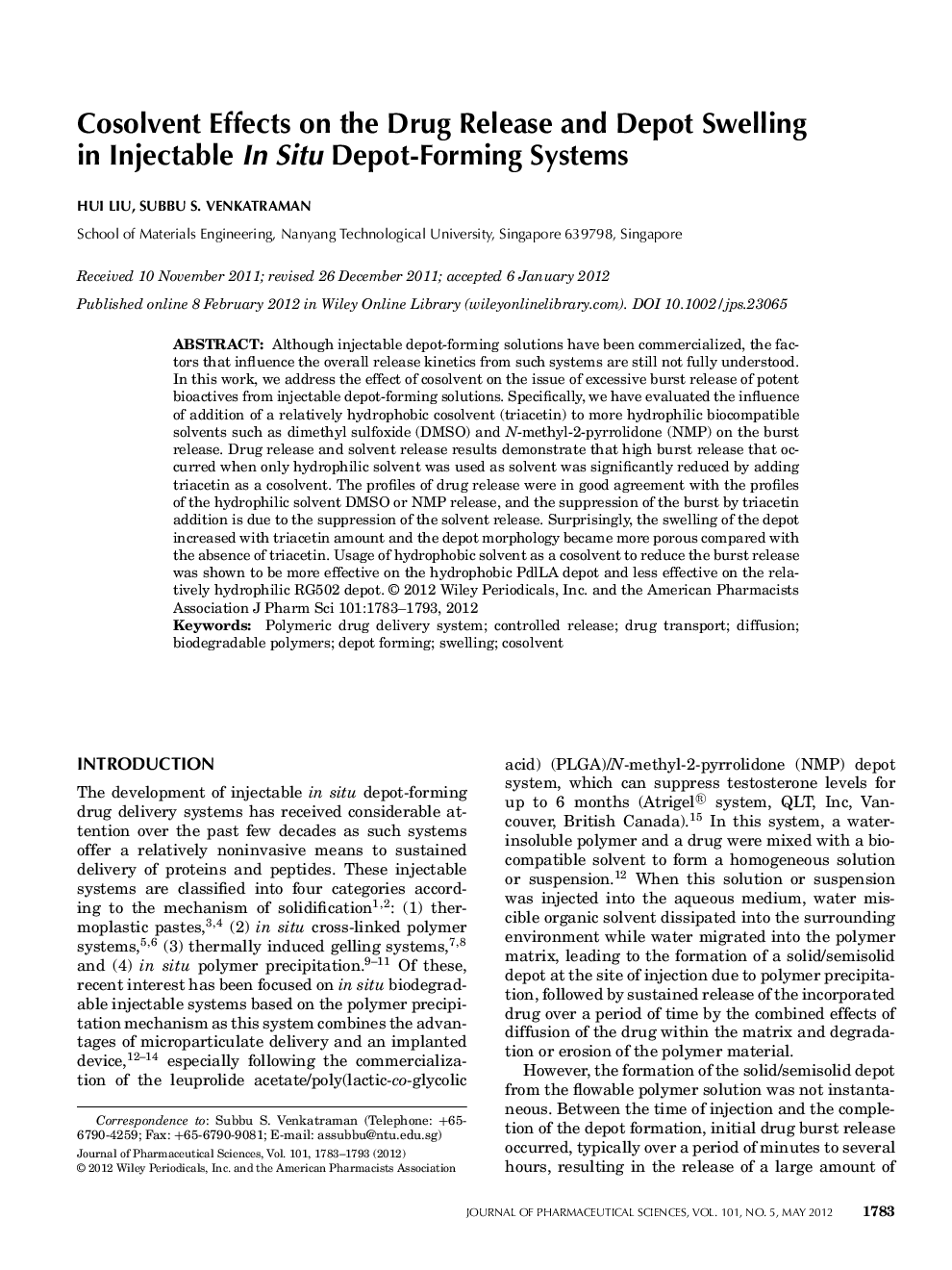| Article ID | Journal | Published Year | Pages | File Type |
|---|---|---|---|---|
| 2485148 | Journal of Pharmaceutical Sciences | 2012 | 11 Pages |
Abstract
Although injectable depot-forming solutions have been commercialized, the factors that influence the overall release kinetics from such systems are still not fully understood. In this work, we address the effect of cosolvent on the issue of excessive burst release of potent bioactives from injectable depot-forming solutions. Specifically, we have evaluated the influence of addition of a relatively hydrophobic cosolvent (triacetin) to more hydrophilic biocompatible solvents such as dimethyl sulfoxide (DMSO) and N-methyl-2-pyrrolidone (NMP) on the burst release. Drug release and solvent release results demonstrate that high burst release that occurred when only hydrophilic solvent was used as solvent was significantly reduced by adding triacetin as a cosolvent. The profiles of drug release were in good agreement with the profiles of the hydrophilic solvent DMSO or NMP release, and the suppression of the burst by triacetin addition is due to the suppression of the solvent release. Surprisingly, the swelling of the depot increased with triacetin amount and the depot morphology became more porous compared with the absence of triacetin. Usage of hydrophobic solvent as a cosolvent to reduce the burst release was shown to be more effective on the hydrophobic PdlLA depot and less effective on the relatively hydrophilic RG502 depot. © 2012 Wiley Periodicals, Inc. and the American Pharmacists Association J Pharm Sci 101:1783-1793, 2012
Keywords
Related Topics
Health Sciences
Pharmacology, Toxicology and Pharmaceutical Science
Drug Discovery
Authors
Hui Liu, Subbu S. Venkatraman,
